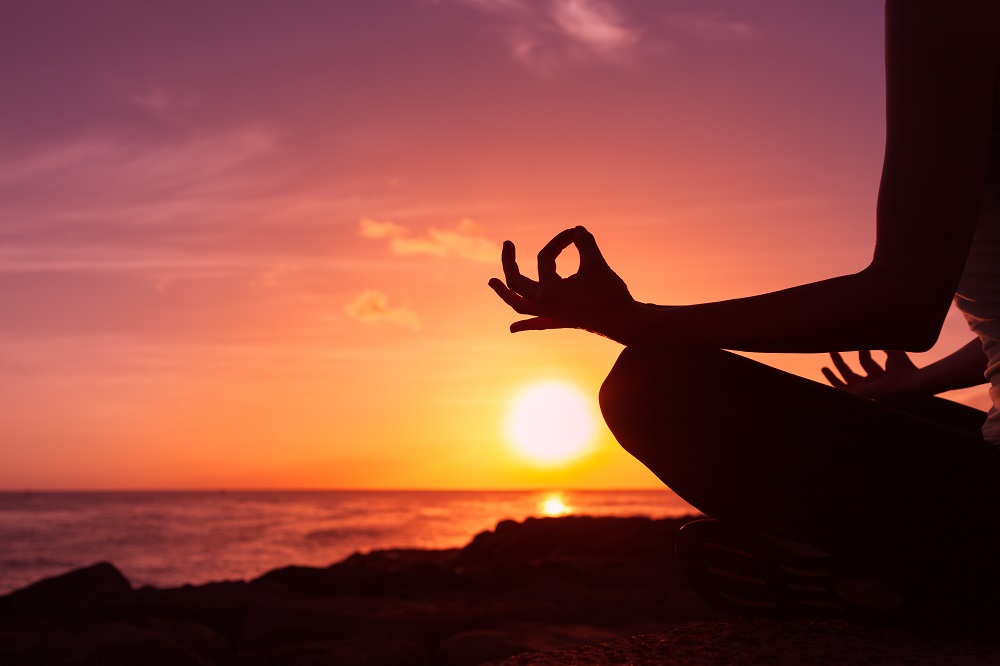With the world how it is right now, there’s no wonder more and more people are turning to healing meditation to feel better in both body and spirit. While many meditate in order to simply appreciate the reduction in stress that comes from sitting quietly and focusing the mind, there are thousands of people claiming that the practice has helped to cure them of their physical illnesses.. but how does it work?

Can meditation heal your body?
The idea of using meditation to help heal the human body has been an area of great interest to brain researchers across the world for decades, with a number of studies revealing that there is solid evidence of a relationship between meditation and a healthy brain. Whilst meditation shouldn’t be used over traditional medicines, we do know that it has the ability to influence the sympathetic nervous system which is responsible for keeping our blood pressure, respiratory systems and heart rate in check.
When our nervous system is out of sync, we start to feel those physical parameters that go hand in hand with feelings of stress and anxiety. There’s no doubt that high amounts of stress and anxiety is linked to a variety of different ailments, including high blood pressure, digestive issues, heart attacks, low libido and insomnia, causing more and more scientists to concur that meditation can have a really profound and positive affect on the human body.
Whether you believe in the healing power of the mind or not is up to you, but we can safely say that taking part in a healing meditation can be a great way to release the stress that accumulates in the mind and the tensions that build up in the body.

How to meditate
- Start by finding a comfortable place to lie down or sit that feels peaceful and quiet to you.
- Set a time limit for your meditation – this can be as short or as long as you’d like.
- Take notice of your body, making sure you are stable and in a position you can stay in for a while.
- Feel your breath and take note of the sensation as it goes in and as it goes out.
- Notice when your mind has wandered, then (kindly without self-judegement) return your thoughts to your breath
- When you’re ready, gently lift your gaze and take a few seconds to notice your environment, how your body feels right now and your thoughts and emotions.
If you’re new to healing meditation, there’s every chance that you’re going to find it strange, even difficult, to sit in silence with your innermost thoughts and feelings, and do nothing — and your mind might try to resist. Anxieties, to-do lists, random memories and other outide thoughts parade constantly through the brain when you first start to meditate, but the idea isn’t to stop them coming into you head, but rather to simply observe them as they enter your mind and let them pass.
Antonia Harman, emotional trauma expert and the founder of Divine Empowerment says, “Thoughts will inevitably bubble-up, the key is to allow them and not to follow them. So, you may start wondering about what’s for dinner. Allow the thought to arise then simply let it go. Another top tip is to take care of bodily needs before you start. Have a snack, but don’t be uncomfortably full. Make sure you are hydrated and have visited the bathroom.”
The “practice” of meditation is often used to help us learn to recognise when our minds are doing their normal everyday acrobatics, and maybe take a pause from that for just a little while so we can choose what we’d like to focus on instead – so if you can’t silence your thoughts just yet, you’re not alone, and a guided healing meditation might help.

Guided healing meditation
Getting into the meditation zone can be tricky when you’re just getting started, which is why guided meditations are really useful if you need help focusing. There are plenty of free apps, Spotify playlists and YouTube channels available, so you can find which healing meditation works best for you, but if you’re not sure where to begin, the following 15 minute meditation is a great place to start.

Just a group of real women dealing with life’s daily struggles! Want to write for us? Email: hello@thedailystruggle.co.uk